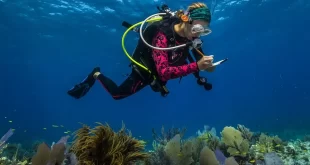Over the past 25 years the Smithsonian Institution has engaged in a robust partnership with Kenya and Kenyan science through its role in the Mpala Research Centre. Central to this has been the on-going support for fellows and fellowships at Mpala. Fellows have worked closely with Smithsonian Institution scientists in developing basic and applied research that has produced high-impact, cutting edge discoveries and led to better conservation, development and research on-the-ground in Kenya and other parts of East Africa.
In 1991, the Smithsonian Tropical Research Institute (STRI) was instrumental in establishing the Mpala Research Centre, a site for multidisciplinary research and training in Africa, in collaboration with Princeton University, the Kenya Wildlife Service, the National Museums of Kenya, and the Mpala Wildlife Foundation. Located on the Laikipia Plateau in north central Kenya, the Centre provides an ideal setting for research in a variety of disciplines, offering 49,107 acres of savannah and dry woodland, an extensive wildlife community typical of East Africa, and ample housing and laboratory space for 35 researchers and students.
The purpose of the Mpala Postdoctoral Fellowship is to promote the study of biology, anthropology, geology, hydrology, material science, social science, soil science or related areas. Projects must be tenable in residence at Mpala Research Centre.
Eligibility
Applicants whose native language is not English are expected to have the ability to write and converse fluently in English. All application materials must be presented in English (foreign transcripts may be translated, see below).
The Mpala Fellowship is a Postdoctoral Fellowship. Predoctoral and Masters students are ineligible.
- Postdoctoral Fellowships: Applicants are eligible to apply for postdoctoral fellowships who have or will have received the Ph.D. or equivalent. The degree must be completed by the time the fellowship begins.
- Senior Fellowships: Applicants who have had a Ph.D. or equivalent for a minimum of seven years are eligible to apply for senior fellowships. Senior Fellowship applications may be submitted one and a half years in advance.
Proposals from early career researchers employed in Kenya-based organizations that involve a part-time but multiple year commitment to research at Mpala will be given preference. This model follows that of the African Academy of Sciences, to foster development of the next generation of science leaders in Africa, while also building long-term collaborations around Mpala.
The number of appointments made each year is determined by the availability of funds for the program. The Smithsonian Mpala Postdoctoral Fellowship Program does not discriminate on grounds of race, creed, sex, age, marital status, condition of handicap, or national origin of any applicant.
Applicants must propose to conduct research at the Smithsonian in one of its areas of research as outlined in Smithsonian Opportunities for Research and Study (SORS). Past or current fellowship recipients are eligible to apply for another award.
No employee or contractor of the Smithsonian Institution may hold a Smithsonian fellowship during the time of his/her employment or contract, nor may an award be offered to any person who has been employed by or under contract to the Institution in the previous year, without the prior approval of the Office of Fellowships.
Applicants whose native language is not English are expected to have the ability to write and converse fluently in English. All application materials must be presented in English (foreign transcripts may be translated, see below).
Proposals Involving the Use of Live Animals: Applicants who wish to conduct research using live animals must submit their proposals for review by one of the Institutional Animal Care and Use Committees (IACUC). Review for animal welfare concerns and approval of procedures by one of these committees must occur before a fellowship can begin.
Applicants who wish to conduct research at the National Zoological Park must discuss their research with proposed mentors to clarify any potential issues with Institutional Animal Care and Use process. Applicants to other Smithsonian Museums and Research Institutes should contact their advisor to determine the appropriate procedures for that unit.
How it Works:
Mpala Postdoctoral fellowships are awarded for one or two years. Appointment periods are in accordance with the applicant’s proposal for the research, unless the length of tenure requested is considered by reviewers to be more than required.
Financial support, in addition to a Smithsonian fellowship, for such purposes as research travel and equipment may be received from other sources provided that no special demands are made upon the fellow’s time. Permission to receive additional stipend support must be requested in writing from the Office of Fellowships and Internships.
It is important that applicants consider the following factors carefully when choosing the dates for the proposed fellowship: their academic schedule; completion dates of their dissertation; the schedule of their proposed advisor/host and the availability of required resources. The dates of tenure proposed in the application (and any change of dates if the fellowship is awarded) should be selected in agreement with the proposed principal advisor. Appointments must begin on the 1st or 15th of the month.
Fellows will be provided with space to conduct their research within the department in which they are working. Applicants should consult in advance with their proposed advisor(s) regarding the availability of facilities and necessary equipment. The amount of support services available to the fellow will be determined by the workload of the department and the policy of the department chairperson and/or unit director. Fellows have access to the Smithsonian Institution
How to Apply:
The publication, Smithsonian Opportunities for Research and Study outlines Smithsonian research activities and lists research staff. Applicants are strongly encouraged to contact staff members to help identify potential advisors, determine the feasibility of the proposed research being conducted at the Smithsonian Institution, and the availability of relevant resources such as staff, collections, archives and library materials during the proposed tenure dates.
Proposals consist of the following:
- Abstract: Abstract of the proposed research, not more than one page.
- Research Proposal: The full statement of your research. (Maximum six pages typescript, double spaced, excluding all other parts of the application, such as the abstract and bibliography.) Please use paper size of approximately 8 1/2 by 11 inches (210 mm x 297 mm). Type or print legibly in dark ink. Do not use type smaller than 12 point or 10 pitch. In preparing your proposal, be sure to provide and address the following:
- A description of the research you plan to undertake at the Mpala Research Centre, including the methodology to be utilized.
- The importance of the work, both in relation to the broader discipline and to your own scholarly goals.
- Justification for conducting your research at the Smithsonian and the Mpala Research Centre and utilization of research facilities and resources.
- Identification of the member of the Smithsonian’s research staff who might serve as your principal advisor/host. Also identify potential co-advisor(s) and/or consultant(s) if applicable. The publication, Smithsonian Opportunities for Research and Study, contains the necessary information on staff research specialties and current departmental interests to help you determine which staff members are best suited to your research needs. Research staff may be named by applicants to serve as principal advisors, co-advisors or consultants. Affiliated research staff may be named as co-advisors or consultants if they will be in residence during at least a portion of the tenure period proposed. You are strongly encouraged to correspond with your proposed advisor(s) as you prepare your proposal.
- Time Table: Estimate of time period for each phase of the research proposed.
- Budget and justification: Budget and justification for equipment, supplies, research-related travel costs, and other support required to conduct the research itself (excluding stipend and relocation costs). You are encouraged to discuss potential research costs with your proposed advisor(s) before submitting your application. If the funds required to support the research exceed the maximum research allowance of $4,000, please explain the source of additional funds.
- Bibliography: Bibliography of literature relevant to the applicant’s proposed research.
- Curriculum vitae: Curriculum vitae, including previous and current fellowships, grants, and/or awards, and a description of your research interests. Also, if English is not your native language, describe the level of your proficiency in reading, conversing, and writing in English.
- Transcripts (unofficial are acceptable): Transcripts (or other materials when transcripts are not issued) from all appropriate institutions are required, except for senior fellowship applications. Applicants for postdoctoral fellowships need only submit graduate transcripts. If transcripts or other materials are not in English the applicant should provide translations. If you do not have a file to upload please send hardcopy of transcripts to: Office of Fellowships and Internships, Smithsonian Institution, 470 L’Enfant Plaza SW Suite 7102, MRC 902 PO Box 37012. Washington DC 20013-7012
- References: You will need the names and email addresses of two persons familiar with your work. Please note that all reference letters are considered confidential unless confidentiality has been specifically waived by the referee. Do not list Smithsonian staff members as your referees; they will have the opportunity to review your application after it is submitted. Please provide a copy of your proposal and a copy of Letter to Referee (downloadable pdf) to your referees. Please be sure reference letters are submitted by the application deadline.
The application, consisting of the proposal, academic records, and two supporting letters, will be reviewed by members of the Smithsonian’s research staff. Applications will be evaluated on the basis of the proposal’s merit, the ability of the applicant to carry out the proposed research and study, and the extent to which the Smithsonian, through its staff members and resources, can contribute to the proposed research.
Selection Criteria:
Applications are evaluated and fellows are selected, by scholars in appropriate fields, on the basis of the proposal’s merit, the applicant’s ability to carry out the proposed research and study, the likelihood that the research could be completed in the requested time, and the extent to which the Smithsonian, through its research staff members and resources.
As noted above, The proposed research topic must be in an area of science or culture supported by Smithsonian that is also appropriate to Mpala Research Center.
The project must be a meaningful collaboration with an appropriate Smithsonian unit (collaboration with multiple units is encouraged).
Proposals from early career researchers employed in Kenya-based organizations that involve a part-time but multiple year commitment to research at Mpala will be given preference. This model follows that of the African Academy of Sciences, to foster development of the next generation of science leaders in Africa, while also building long-term collaborations around Mpala.
If not already employed in Kenya, the fellow must also collaborate with an appropriate Kenyan organization such as National Museums of Kenya or Kenya Wildlife Service. Collaboration with the international organizations in Kenya, such as the International Center of Insect Physiology and Ecology, is also encouraged. Collaboration with the SIGEO/CTFS plot is also encouraged. The majority of the fellowship period should be spent in residence at Mpala [except if there is good reason not to, explain in the proposal].
Proposals are encouraged in the fields of conservation medicine, soils/erosion potential/water conservation, rangeland regeneration/grazing management, ecosystem services, socio-economic studies of natural resource management, and the principals of wildlife ecology and behavior, but other creative ideas are welcome.
The Smithsonian Fellowship Program does not discriminate on grounds of race, creed, sex, age, marital status, condition of handicap, or national origin of any applicant.
 medjouel.com Study Non Stop
medjouel.com Study Non Stop



